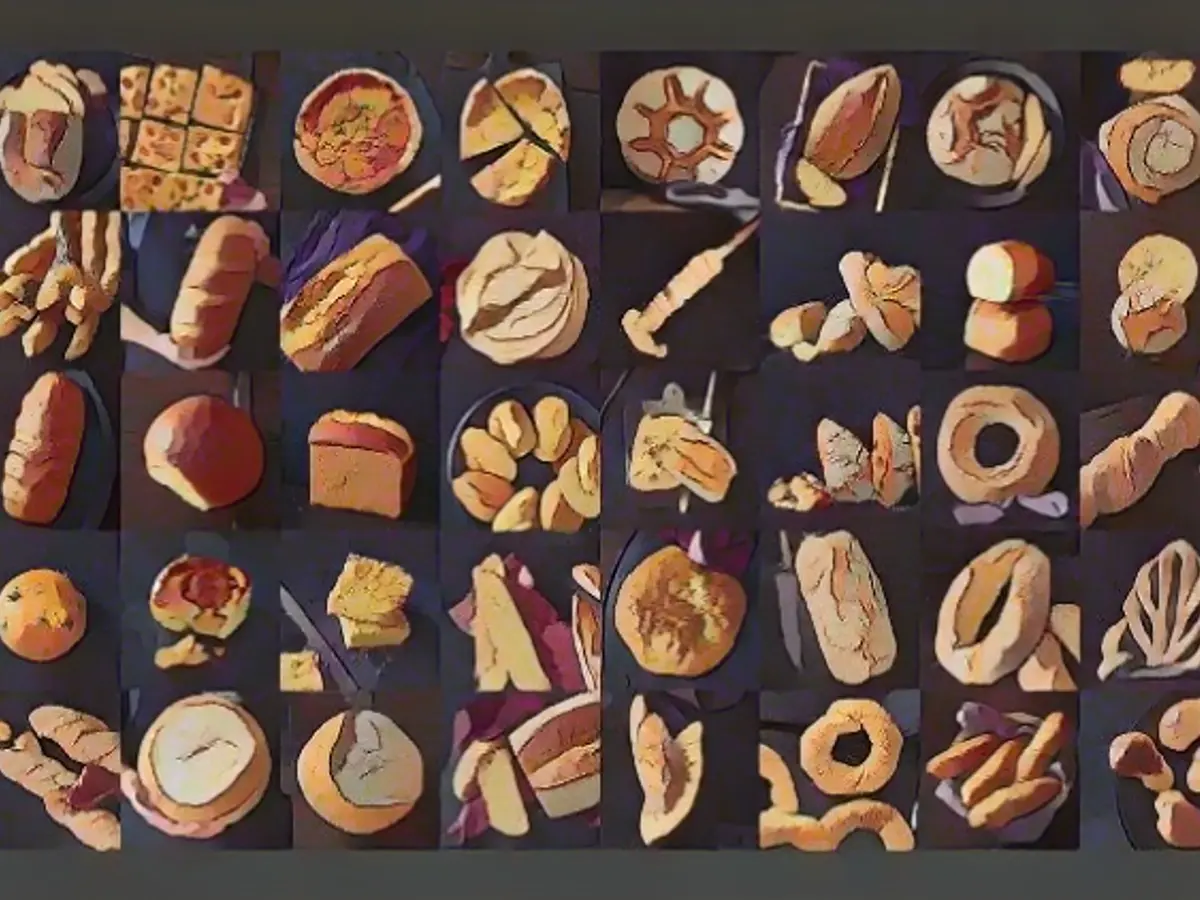Home-baked bread, the key to joy and well-being
Two men, two goals: Lutz Geißler and Jo Semola's shared mission is to provide everyone with delicious, wholesome bread. Whoever you choose, you can't go wrong.
Ever wondered if the bread you buy tastes as good as the lottery win? Good luck can sometimes bring us delicious bread from our favorite baker. As a resident in central Berlin, my options are limited to supermarket chains and bakery outlets, making up the city's bread market. In 2016, I discovered Lutz Geißler's first bread baking book, which was the beginning of my life as a DIY bread baker.
My previous attempts at baking bread using the "Ohne Geißler" brand had never been successful. My bread tended to be too hard and dry, with the steam function on my stove rarely working properly. Geißler's straightforward instructions and detailed photos transformed my experience, enabling me to tackle sourdough with confidence. As many DIY bread bakers will attest, there's something comforting and satisfying about mixing dough in a bowl – even if your fingers end up sticky in the process.
I've since added two new books to my collection: Geißler’s "Die neue Brotbackformel" and "Wake & Bake" by Jo Semola. Both feature the stunning food photography of Hubertus Schüler.
Lutz Geißler: A Bread Baking Legend
Geißler has mastered the art of explaining the complexities of bread baking in a simple, easy-to-understand manner. With 17 bestselling books under his belt, and over 600,000 copies sold, the self-proclaimed "bread pope" is the most successful bread baking author in the German-speaking world. His blog, "Plötzblog," attracts over 100,000 readers each month. It's hard to believe there's anything left to say about bread baking that Geißler hasn't covered.
However, with his latest book, "Die neue Brotbackformel," Geißler makes bread baking more personalized and accessible. Whether you're baking for one or a family, Geißler’s recipes offer flexibility and variety while ensuring that you'll always have fresh, healthier alternatives to store-bought bread.
Geißler's "new bread formula" eliminates the hassle of sticking to a rigid schedule. Choose your type(s) of flour, mix the ingredients, place in the fridge and let the dough work its magic. If time permits, you can shape and bake your bread within the next 24 to 72 hours. Bread types range from spelt bread to yufka, so you have plenty of choices.
The Four Basic Doughs
Geißler’s basic dough recipes categorize ingredients according to the types of flour used: A with wheat flour, B with wheat and rye flour, C with spelt flour, and D with wholemeal wheat flour. Each recipe follows the same basic steps: weighing, mixing, covering, overnight fridge maturation (with one-hour and 12-hour stretching and folding), shaping, and room-temperature maturation. The preparation time is minimal, leaving the rest of the work up to the dough.
Whether you're making plain white bread, French baguettes, wholemeal bread, tarte flambée, or pizza, Geißler's recipe book has you covered. The recipe index is extensive, from spelt bread to yufka. With over 50 results from a single basic dough, you can even decide on the day of baking which bread you want to bake.
Semola's "Wake & Bake": The Quick Bread Revolution
Meet Jo Semola, a trailblazer in the bread baking world who is winning over fans with his easy-to-follow methods and simple approach to baking. With social media fame, Semola’s knack for explaining the art of bread baking to novices is unmatched.
Semola's book, "Wake & Bake," advocates for minimal effort and maximum results. Prepare quick breads in the evening, let the dough rest in the fridge overnight, and bake in the morning. The smell of fresh bread will fill your home and set your day off on a positive note. With 60 recipes, including bagels, croissants, and various roll variations, you won't be bored with the sameOld classics.
What makes Semola's method unique is its focus on flavor development and digestibility. By allowing the dough to rest overnight, the bread is released of excess yeast and becomes more digestible. It also intensifies the bread's flavor, resulting in a superior product compared to industrially-produced bread.
From Yeast to Sourdough: Exploring Different Methods
Semola's book, like Geißler's, covers a wide range of ingredients and techniques. The theoretical section is rich with information on flour types, accessories, dough resting, proofing, and baking. Semola's unconventional methods may seem daunting at first but offer a lot of potential for those looking to expand their bread-baking skills.
What's more, Semola's book includes a quick start guide and QR codes for video tutorials, making it an excellent resource for both beginners and experienced bakers.
Geissler's Camembert Bread: Warm and Cheesy
A favorite among bread lovers, one of Geißler's most popular recipes is his Camembert bread, which calls for three small loaves. Be sure to allow the Camembert to warm to room temperature before shaping and baking. Since the cheese melts during the baking process, it's best to enjoy the bread while it's still warm. For added flavor, try mixing fresh rosemary or other herbs into the dough.
Camembert Bread Recipe:
Preparation day on baking day: Active time: 15 minutes, Passive time: 2 hours.
- Preheat oven to 250°C in advance.
- Remove the ripe basic dough from the bowl, onto a floured work surface.
- Cut three dough pieces, each weighing 330-360 grams.
- Gently fold the dough pieces round from the edges.
- Place in a floured linen cloth for 1 hour at room temperature (20°C), with the end facing upwards, and leave to mature. Cover with foil or a container.
- Place the dough pieces on the work surface with the ends facing upwards, make a depression in the dough, and insert a Camembert into the middle of each.
- Fold the edges of the dough loosely over the Camembert, press the end firmly shut.
- Place in a linen cloth as far apart as possible with the end facing upwards.
- Cover and leave to mature at room temperature (20°C) for 45 minutes.
- Place the dough pieces upside down on baking paper.
- Make square or diamond-shaped incisions with a knife.
- Place the dough pieces in the preheated oven, reduce temperature to 210°C, and bake for about 30 minutes.
Semola's Mixed Wheat Bread with Hazelnuts and Walnuts: Delicious and Healthy
Only a few breads are as tasty and healthy as Semola's mixed wheat bread with hazelnuts and walnuts, which is especially delicious as part of a rustic snack.
Mixed Wheat Bread Recipe:
Prepare 25 minutes, rest for 15-21 hours, bake for 40-50 minutes. Vegan.
Day 1:
- Toast hazelnuts and walnuts, place in a bowl, pour water, cover, and leave to soak at room temperature for 4-6 hours.
- Prepare sourdough, place starter, water, and flour in a bowl, mix vigorously with a wooden spoon, cover loosely, and leave to mature at room temperature for 4-6 hours.
- Prepare main dough: Add starter, sourdough, both flours, water, and salt to the mixing bowl of the food processor. Knead with the dough hook at low speed for 5 minutes, then increase speed to medium and knead for 6-8 minutes to form a medium-stiff dough. (Alternatively, knead by hand for 13-15 minutes).
- Cover the bowl and leave the dough to rise at room temperature for 3 hours, stretching and folding three to four times in the first 2 hours.
- Pull the dough into a rectangle on a lightly floured work surface, fold the short sides over the middle, and roll up tightly from the long side to develop tension. Shape into an elongated loaf, place in the floured proofing basket with the seam facing upwards, cover, and leave to prove overnight in the fridge for 8-12 hours.
Day 2:
- Preheat the oven well to 250°C top/bottom heat.
- Carefully turn the pastry out onto a baking tray lined with baking paper and make several deep diagonal cuts with a sharp knife.
- Place in the preheated oven on the lowest shelf, reduce the temperature to 220°C, and bake with plenty of steam for 40-50 minutes, releasing steam after 20 minutes by opening the oven door, and finish baking until the bread is a lovely dark brown.
- Take out and leave to cool on a wire rack.
Heidi Driesner wishes you every baking success.
Positive reviews for Geißler's bread baking books have inspired many amateur bakers to make their own delicious homemade bread. (Reviews, food)
In his latest book, "Die neue Brotbackformel," Geißler offers simple and unhurried baking methods, allowing anyone to make various, healthy bread options. (Reviews, food)
Source:
Enrichment Data:
Distinguishing quick breads from traditional breads is crucial when understanding the techniques and methods used by Lutz Geißler and Jo Semola. Here are the significant differences:
- Yeast vs. Leavening Agents
Traditional Bread: Usually involves yeast as the primary leavening agent, necessitating a longer fermentation period to create carbon dioxide for rising. This fermentation period can last several hours or even overnight, depending on the recipe's desired outcome. Quick Bread: Employs baking powder or baking soda as leavening agents, requiring no fermentation time. Quick breads can be mixed and baked within an hour.
- Rise Time
Traditional Bread: Requires a longer rising time, ranging from 1 to 2 hours or more for complex recipes. This allows the yeast to fully ferment the sugars and result in a lighter, airier texture. Quick Bread: Features a much shorter rising time, if any, as it relies on chemical leavening agents that act quickly. The dough mix and bake process can often be completed within an hour.
- Ingredients and Texture
Traditional Bread: Typically includes a combination of flour, water, yeast, salt, and sometimes additional ingredients like sugar, oil, or nuts. The dough is kneaded to develop gluten, giving bread its structure and texture. Traditional breads may have a variety of textures, from crusty to soft, based on the recipe and technique. Quick Bread: Utilizes a simpler ingredient list with flour, sugar, eggs, milk, and leavening agents. The dough is not kneaded, resulting in a denser, more cake-like texture.
- Preparation and Baking Time
Traditional Bread: Involves more time and effort for preparation, including mixing, kneading, and rising the dough. Baking time can be longer, spanning around 30-40 minutes in a preheated oven. Quick Bread: Prepares and bakes more rapidly. The mixing and baking times are significantly shorter, typically around 20-30 minutes in a preheated oven.








